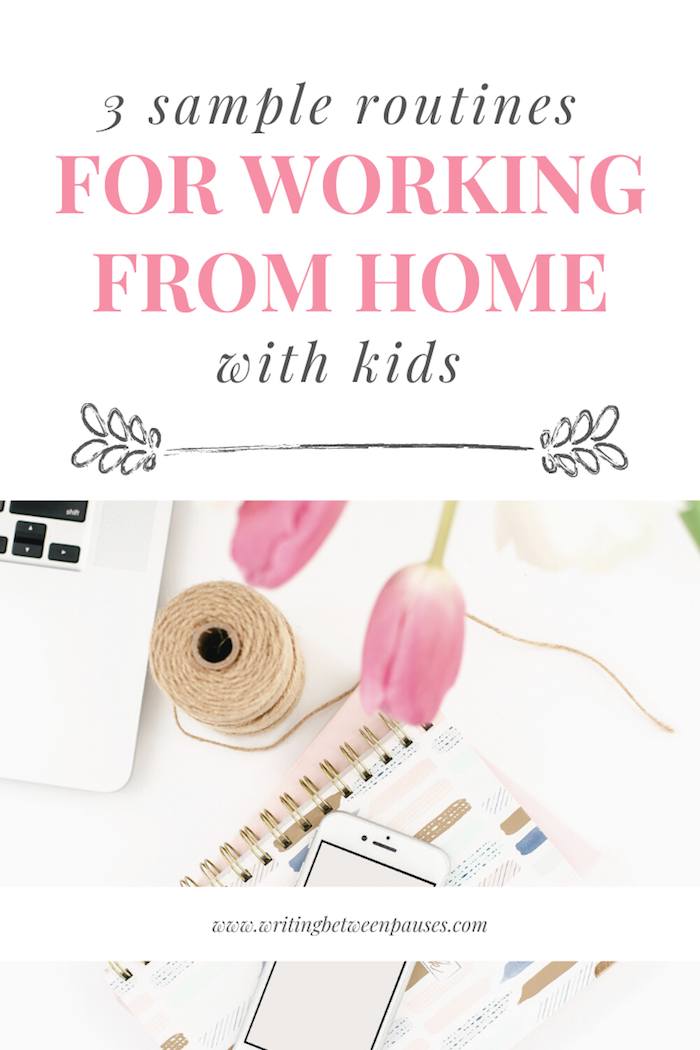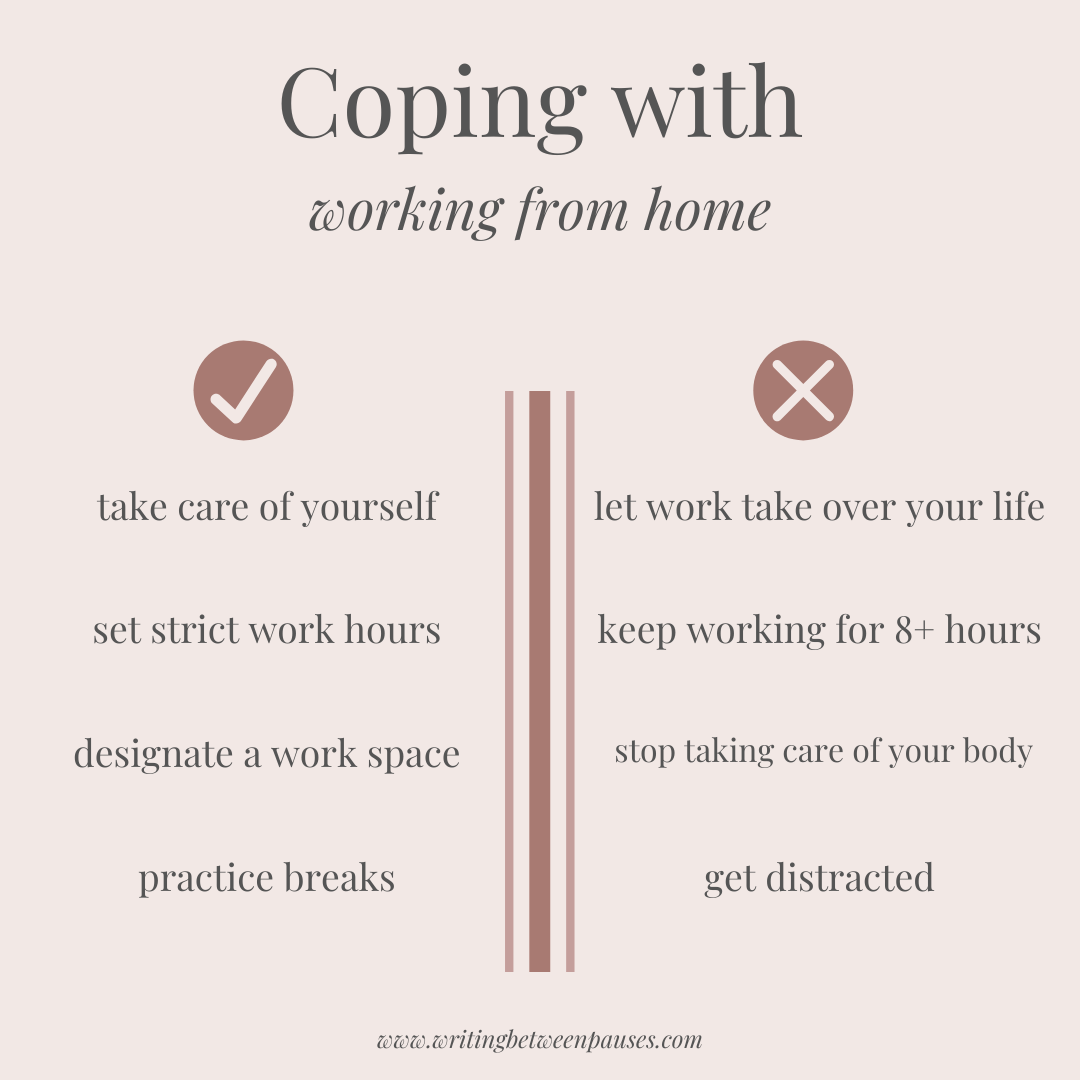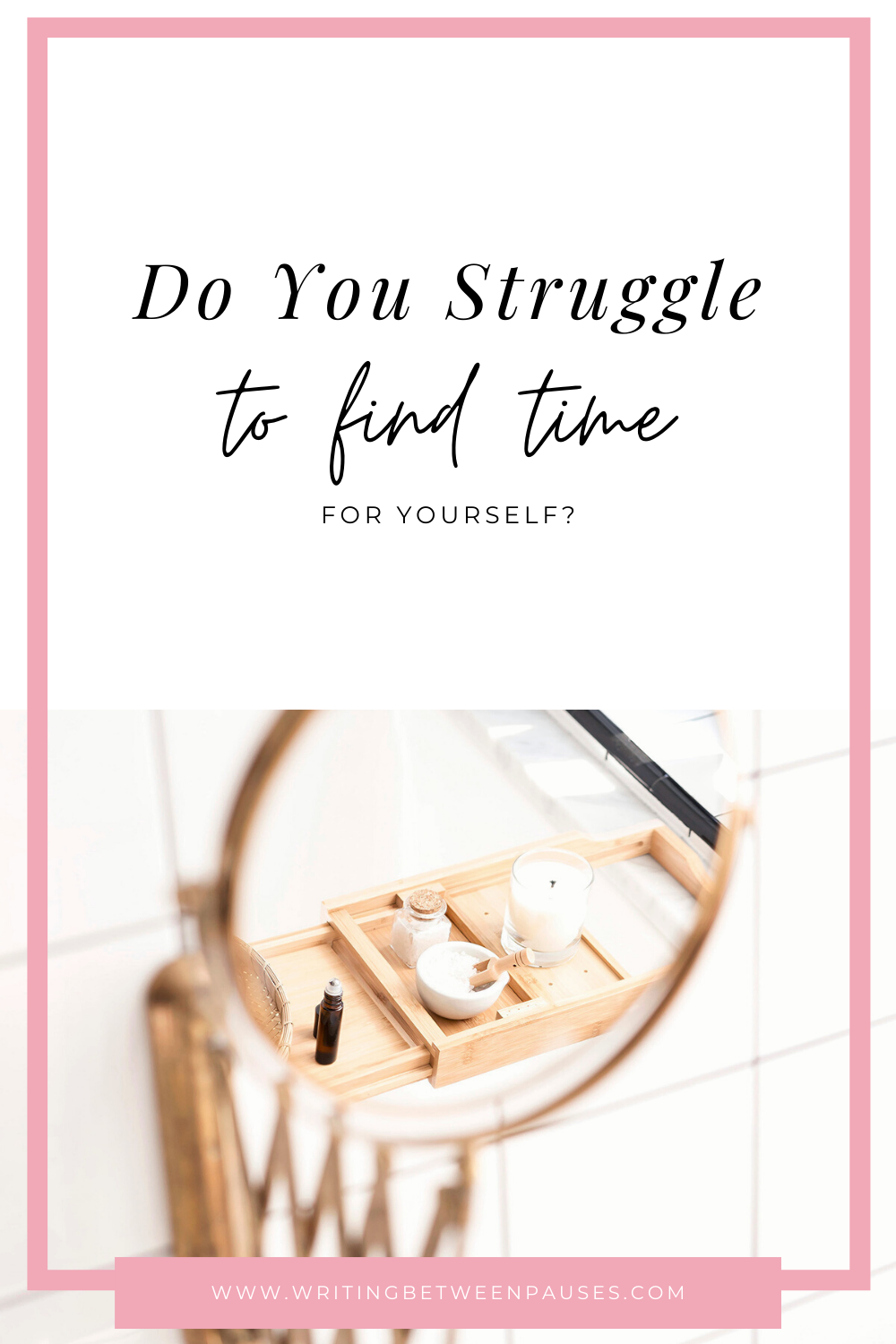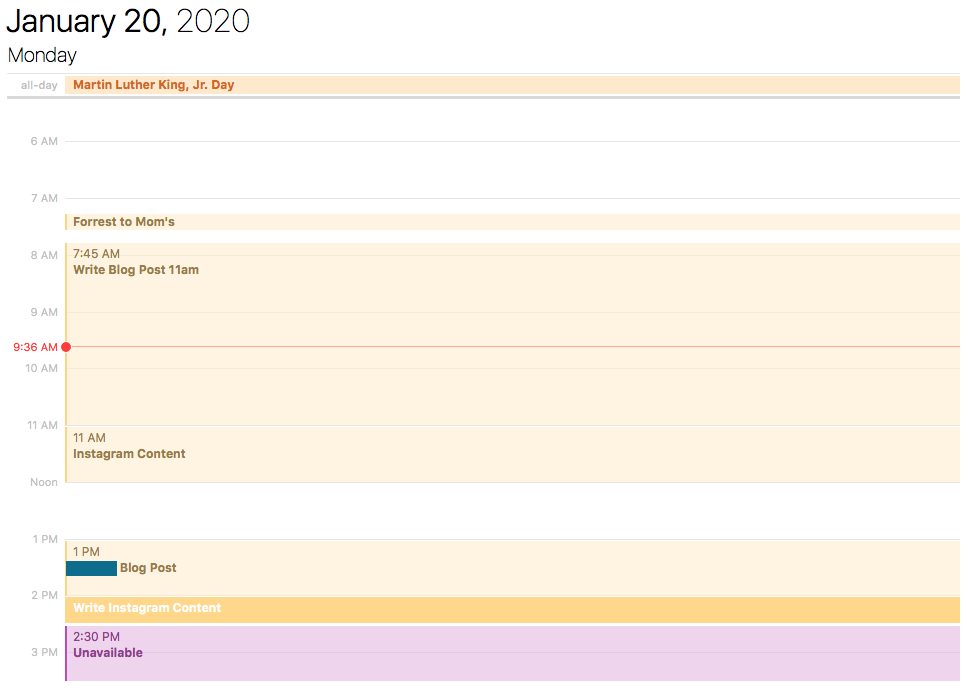Welcome to my new series all about routines. While developing my own routine over the last few weeks of stay-at-home orders and quarantine, I’ve found myself writing down notes about developing my routine, working from home, having kids, keeping self-care in my day, and staying sane! I wanted to share some of this information with you, to help you succeed and feel more rested, recharged, and productive.
When Forrest was very young (like… a newborn), I remember spending one entire day reading other people’s routines and schedules with their baby. I was trying to find a way to make my day work a little better, to feel a little more sane and more human. I sought out examples of other people’s day because I needed ideas of what everyone else is doing.
That’s why I’m here today. We are all in a new, exciting world: one where school is all online, there is no more daycare or preschool, and the refuge of the park no longer exists. No coffee shops, no malls, no nothing.
It’s not all negative, though. If you’re here, then that means you’re still working, even if it’s from home, and that means we’re both in highly privileged positions! We are navigating these times in a different way than other people and as long as we acknowledge that, we’re golden.
In the course of writing this blog post, I found myself comforted by seeing other people’s routines! Alongside my own, I’m sharing two of my friends routines. I tried to pick a variety of careers, lifestyles, and situations. I’ll explain a bit more about each one later, but I hope you can use these example routines to make space for yourself in your day and streamline your time a little bit.
If you have questions about creating a routine that works for you, stay tuned! I have more posts coming. If you have a specific question, don’t hesitate to drop it in the comments below!
1. Marketing copywriter with 1 child
Oh hi, it’s me! I’m sure you’re all a bit tired of my daily routine at this point, but I wanted to share a quick breakdown of a day where I’m home with my son, Forrest. Here’s a rundown:
Wake up at 5:30 am. Let out my dog and feed him. Make coffee.
Morning routine: Check all my work emails and Slacks, check my calendar, create a master to do list for the day that also include my daily habits. My morning hour is usually spent scheduling for clients, as these is tedious work that I can’t be distracted from.
When Forrest wakes up, we get dressed, eat breakfast, and do morning journaling together.
After that, it’s quiet play time for him and I settle in to my to do list and tackle as much as possible.
We eat lunch together, then more quiet play time while I work.
We have TV time together from 3-4, then make dinner together at 4pm. My husband gets home around 5pm most nights.
Evening routine: I finish up any outstanding work tasks, then do chores (dishes, laundry, etc). Then, I wash my face, put on a face mask, and either read in bed with my heating pad or play Animal Crossing. This is the number one way I de-stress right now and I do not miss it. While I’m doing this, my husband plays with Forrest or Forrest has quiet play time while my husband works in his office.
Things I rely on: my do list and planner; calendars and reminders; the clock; Forrest’s independence. Some days, it’s easier than others! Our challenge is that Forrest can be very anxious and moody right now; if I notice he’s struggling, I drop everything to take care of him. That’s what he needs from me and I try to be there for him at those times. If you’re a parent, don’t hesitate to do that. One of our other challenges is that my husband leaves for work every day, as he is an essential worker.
2. Lawyer with 2 young children
This is my friend, who we will call A. A has 2 younger children: a 5-year-old and a 1-year-old. She and her husband are both working from home right now. She works as a lawyer. Here’s her routine:
Wake up with children around 7am, make coffee, and make breakfast.
Husband watches kids while she answers emails and has meetings.
Husband makes lunch and they swap: she watches kids while her husband works.
Whole family makes dinner together and goes on a walk.
Kids watch a movie while they both answer emails and finish up any work tasks.
Kids go to bed and they both work. In the evening, she has a routine to clean up the house, do a quick yoga video, and do her skincare routine.
Things A relies on: An online to do app that sends her reminders on her computer and her phone; her husband trading shifts with her; her backyard for picnics, playtime, and more; Amazon Prime kids TV offerings. A has a great routine that works for her and her husband—it is no nonsense and they are both able to power through their individual work times thanks to trading who is watching the kids!
3. Project manager with 3 children
This is my friend, who will call C. C has 3 children: a 7-year-old, a 9-year-old, and a 13-year-old. Her husband is a nurse and so, isn’t living at home right now, as their 9-year-old has an immune disorder (Celiac’s disease) that puts him at high risk. They made the tough choice for her husband to stay at his brother’s home for the duration of stay-at-home orders. She works from home as a project manager for a marketing agency. Here’s her routine:
Wake up at 5am, make coffee, and call husband. This is an important part of her routine, as her husband is usually getting ready for work around the same time and they connect without interruption. After this call, she takes a shower and gets ready for the day. She doesn’t feel like her day starts until she showers.
Wake up kids at 6:30amish, get them ready, and have them help prepare breakfast.
All kids start school by 8am. C calls into her morning meeting with her team and checks her email and Slack for the first time. She then prioritizes her tasks for the day and delegates to her team. (This part of the day is frequently interrupted by her youngest, who needs more help with school!)
C takes a break after working for a few hours to make lunch, check in with all her kids and fix any issues they need help with. After that, they all start working again.
At 3pm, school is over and C lets her oldest head to his room with his tablet to have a Zoom call with his friends. The youngest 2 get TV time while C has a final meeting with her team.
Around 4, C’s brother-in-law drops off groceries for them. Because her middle son is high risk, they don’t go to the grocery store. He leaves groceries on the porch and waves from the driveway.
The youngest 2 help C prepare dinner. They all sit down to eat together.
At 6pm, they have a family Zoom call with C’s husband, who fills them in on his day. Afterwards, the kids pick a movie to watch together while C cleans the house, does dishes, and makes a list for the next day.
In the evening, as the kids are winding down and heading to their rooms to get ready for bed, C picks a TV show to watch on Netflix by herself. She also likes to scroll through Instagram to decompress.
Things C relies on: Her team to help pick up the slack when she needs it; her brother-in-law and family for helping keep her son safe; online school to help occupy her kids’ time; and a running to do list that she re-prioritizes everyday. C is in a tough situation where, not only is her husband an essential worker still outside the home, he is currently living away from the family to keep their son safe. It’s a stressful situation, but she has help from her family and friends and support from her team. Her routine is pretty slow and even, and she gives herself permission to take a break frequently, as she needs it.
What can we learn from these routines?
No two routines look the same. It depends on your profession, what you have going on in your life, where you live, and more! Don’t feel pressured to take on certain things if you aren’t able to. A prime example is I reversed on my intense homeschooling after 2-3 weeks—it just wasn’t sustainable!
Give yourself grace. It’s ok to take a break, to take a moment to rest or relax. In my case, my job involves a lot of community management and social media response; this requires a lot of mental energy on my part and sometimes, I really need a break. I see a lot of grief and listen to a lot of woe and it can be taxing!
Find systems that work for you: For me, I use a combination of calendar-planner-notebook to keep everything organized. I also have a specific notebook for each client to keep meeting notes and write down things to remember. For A, she uses a to do app that she keeps pristine (she showed it to me and honestly, it’s a beaut—she is not the blogging type, but I was very impressed!); for C, she uses a written to do list on an old school legal pad (retro!) and keeps it running day-to-day (which is equally as impressive, honestly).
Make time for you! Your day needs time for you too. Working from your home, parenting 100% from your home… it gets exhausting fast and burn out is real. Make self-care a part of your routine, whether it’s simply picking a show to watch on Netflix or taking a bubble bath. Make that time and stick with it!
Have a goal in mind. Your routine should be designed around a goal. Right now, for so many of us, that goal is simply to remain safe and to keep others around us safe. However, thinking of the larger picture, we all have certain goals: for me, I’m trying to build my clientele, hopefully, to keep working. I can’t speak for A and C’s goals, but I know they are goal-minded women! My routine is designed to make space for me to work and grow, while also take care of myself and Forrest. If you’re thinking of adding a daily routine to keep yourself on track, think of the ways it will contribute to your longterm goals!
I’m so excited to kick off this series about routines. I hope you love it too! Don’t forget, if you have questions or want to chat about your routine, leave me a comment or reach out to me on Instagram.
Join me next week for an article all about routine essentials!





























